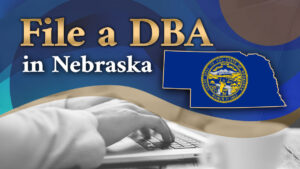Boardroom presentations are an important part of every senior executive’s personal and professional development. Following the 10 tips outlined below will help you to present like an experienced professional and help your board to make the best and most appropriate decisions following your presentations.
It is far easier to progress your career when you are an executive who is welcomed into the boardroom as a trusted source of good quality information and a pleasant presenter.
- Don’t be daunted. Presenting to the board is an important and onerous task. If someone has recommended you to make a presentation in the board room they have done so because they believe that you have what it takes to make a good presentation. Boards are important. Nobody is going to recommend a poor presenter, or presentation by somebody who has insufficient knowledge of the topic. To do so would reflect badly on them far more so than on you.
- Be prepared. Understand why the board wants your presentation. Do they need background information on a topic, or a report on progress, or is there a decision which the board must make. If you understand what your presentation is expected to achieve you will be able to develop your presentation so that it does achieve that.
- Understand what boards do. The board is the ultimate decision making forum within any organisation. Individual board members have very little power but the board as a whole, acting in consensus, is empowered to perform or delegate all of the business of the organisation. The board should act on behalf of the shareholders. The aim of the board is to enhance shareholder wealth or, in a not-for-profit organisation, to ensure that the organisation does what the people who founded it wished it to do. Make sure that your presentation helps the board to fulfil its aims.
- Understand how boards work. Because boards work as a team, rather than as a group of individuals, it is important that they discuss issues thoroughly and form a group decision. When presenting to a board, even if you are giving them background information, your aim should always be to enable the board members to have a good discussion of the topic and reach their own understanding and form a basis the future decision-making.
- Understand board protocol. It is normal in most boardrooms for all information to flow to the board under the direction of the chairman. You can expect that experienced board members will address their questions to you through the chairman. The chairman will also manage the amount of time that the board can dedicate to anyone agenda item, and may ask you to spend more on less time on your presentation than previously envisaged depending on the amount of time the board has already spent on other issues. It is wise to enter the boardroom with the ability to present at least 20% more than you planned to present, but without an additional 20% more slides. You should also be able to achieve your objective even if your time is cut by 20%.
- Allow the board to prepare thoroughly. Boards need to discuss the information presented, and to do that they need to understand it. Try to provide a background paper or briefing report which can go to the board with the agenda and other meeting papers so that the directors are “up to speed” before you present.
- Discuss rather than present. Boards sit through a lot of presentations. Rather than subject them to yet another presentation, try to summarise very briefly the information you have provided beforehand, and then facilitate a discussion with the board members. They will be much happier that the things they say them with anything you can say.
- Provide good quality information. Boards need information that is relevant, in perspective, timely provided an appropriate frequent intervals, and reliable consistent coherent and easily comparable with other data, and above all, clear and easily understood. Be sure to name your sources, quote references, and alert the board to any inconsistencies between different data sets that you might have incorporated into your information.
- Set the content at an appropriate level. What goes into a report depends upon what the board already know, how important this report is to the board, whether the report is in a written or verbal form, any supporting information, etc. Do not gloss over the risks involved. Boards need to understand the worst possible outcome, the most likely outcome, and the best possible outcome in order to make an appropriate decision having full awareness of the risks involved.
- 10. Be punctual and polite. Board members are important people, they should not be kept waiting. Be sure to attend the meeting a few minutes before your appointed time and to allocate sufficient time so that if the board is running late you do not have to rush your presentation or leave before the board has finished the discussion. Remember that manners are important and that people will respect you if you respect them. Please and thank you are the two most important words in your presentation. If a board member interrupts interjects, rather than react to their rudeness show your good manners, and pause politely to listen to their comment and deal with it before moving on.
Of course, you must also be a polished presenter. These tips do not obviate the need for expertise in presenting. They add to you presentation skills and allow you to take them to the most important and discerning corporate audience, the board.
______________________________________
Julie Garland-McLellan has been internationally acclaimed as a leading expert on board governance. See herwebsite andLinkedIn profiles, and get her booksDilemmas, Dilemmas: Practical Case Studies for Company Directors andPresenting to Boards.
 Sections of this topic
Sections of this topic















